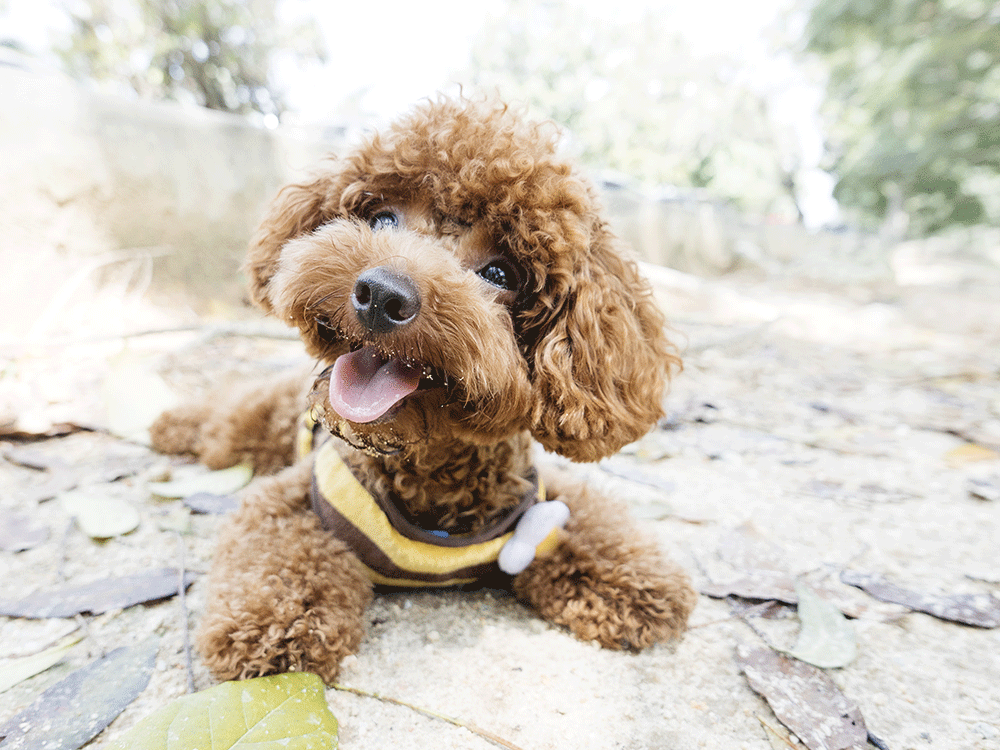When Did Wild Poodles Roam the Earth?
They say there’s no such thing as a stupid question, but we couldn’t help but wonder, “Did poodles ever exist in the wild?” Our dog breed expert reveal the secret history of this popular dog breed.

Ever Wonder if Poodles Existed in the Wild?
The thought of wild poodles contending with the forbidding elements of nature makes us shudder. It’s hard to imagine a toy poodle surviving torrential rainstorms or blistering droughts in the desert, or slaughtering prey for its dinner (unless its prey was canned dog food). Or even getting its haircut messed up.
For that matter, what animal would make a toy poodle its prey in the wild? We have our doubts that it would be a status symbol for one lion to approach another predator and boast, “Guess what? I bagged myself a poodle today.”
If something seems wrong with this picture of poodles in the wild, you’re on the right track. We posed our Imponderable to the biology department of UCLA, and received the following response from Nancy Purtill, administrative assistant:
The general feeling is that, while there is no such thing as a stupid question, this one comes very close. Poodles never did live in the wild, any more than did packs of roving Chihuahuas. The popular breeds of dogs were derived from selective breeding of dogs descended from the original wild dogs.
Sally Kinne, corresponding secretary of the Poodle Club of America, Inc., was a little less testy:
I don’t think poodles ever did live in the wild! They evolved long after dogs were domesticated. Although their exact beginnings are unknown, they are in European paintings from the fifteenth century [the works of German artist Albrecht Dürer] on to modern times. It has been a long, LONG time since poodles evolved from dogs that evolved from the wolf.
A Brief History of the Poodle
Bas-reliefs indicate that poodles might date from the time of Christ, but most researchers believe that they were originally bred to be water retrievers much later in Germany. (Their name is a derivation of the German word pudel or pudelin, meaning “drenched” or “dripping wet.”) German soldiers probably brought the dogs to France, where they have traditionally been treated more kindly than Homo sapiens. Poodles were also used to hunt for truffles, often in tandem with dachshunds. Poodles would locate the truffles and then the low-set dachshunds would dig out the overpriced fungus.
Dog experts agree that all domestic dogs are descendants of wolves, with whom they can and do still mate. One of the reasons it is difficult to trace the history of wild dogs is that it is hard to discriminate, from fossils alone, between dogs and wolves. Most of the sources we contacted believe that domesticated dogs existed over much of Europe and the Middle East by the Mesolithic period of the Stone Age, but estimates have ranged widely-from 10,000 to 25,000 B.C.
Long before there were any “manmade” breeds, wild dogs did roam the earth. How did these dogs, who may date back millions of years, become domesticated? In her book, The Life, History and Magic of the Dog, Fernand Mery speculates that when hunting and fishing tribes became sedentary during the Neolithic Age (around 5000 B.C.), the exteriors of inhabited caves were like landfills from hell—full of garbage, animal bones, mollusk and crustacean shells and other debris. But what seemed like waste to humans was an all-you-can-eat buffet table to wild dogs.
Humans, with abundant alternatives, didn’t consider dogs as a source of food. Once dogs realized that humans were not going to kill them, they could coexist as friends. Indeed, dogs could even help humans, and not just as companions—their barking signalled danger to their two-legged patrons inside the cave.
This natural interdependence, born first of convenience and later affection, may be unique in the animal kingdom. Mery claims our relationship to dogs is fundamentally different from that of any other pet—all other animals that have been domesticated have, at first, been captured and taken by force:
The prehistoric dog followed man from afar, just as the domesticated dog has always followed armies on the march. It became accustomed to living nearer and nearer to this being who did not hunt it. Finding with him security and stability, and being able to feed off the remains of man’s prey, for a long time it stayed near his dwellings, whether they were caves or huts. One day the dog crossed the threshold. Man did not chase him out. The treaty of alliance had been signed.
Once dogs were allowed “in the house,” it became natural to breed dogs to share in other human tasks, such as hunting, fighting and farming. It’s hard to imagine a poofy poodle as a retriever, capturing dead ducks in its mouth, but not nearly as hard as imagining poodles contending with the dinosaurs and pterodactyls, or fighting marauding packs of roving Chihuahuas.
Living in a small space? Here are 13 of the Best Apartment Dogs!



